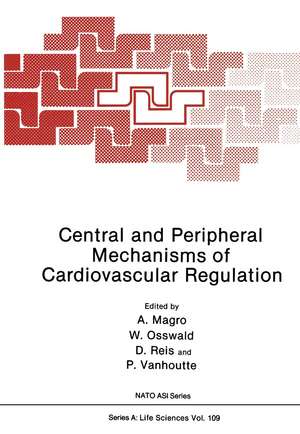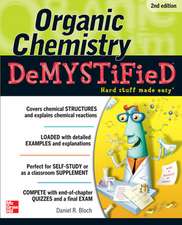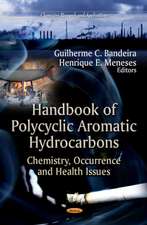Central and Peripheral Mechanisms of Cardiovascular Regulation: NATO Science Series A:, cartea 109
Autor Paul Pilowskyen Limba Engleză Paperback – 25 noi 2012
Din seria NATO Science Series A:
- 15%
 Preț: 656.58 lei
Preț: 656.58 lei - 15%
 Preț: 655.13 lei
Preț: 655.13 lei - 15%
 Preț: 678.35 lei
Preț: 678.35 lei -
 Preț: 397.38 lei
Preț: 397.38 lei - 5%
 Preț: 377.87 lei
Preț: 377.87 lei -
 Preț: 397.76 lei
Preț: 397.76 lei - 18%
 Preț: 1232.41 lei
Preț: 1232.41 lei - 5%
 Preț: 731.64 lei
Preț: 731.64 lei -
 Preț: 413.15 lei
Preț: 413.15 lei - 15%
 Preț: 649.22 lei
Preț: 649.22 lei - 5%
 Preț: 369.45 lei
Preț: 369.45 lei - 5%
 Preț: 2162.19 lei
Preț: 2162.19 lei -
 Preț: 407.39 lei
Preț: 407.39 lei -
 Preț: 396.40 lei
Preț: 396.40 lei - 15%
 Preț: 663.93 lei
Preț: 663.93 lei -
 Preț: 387.38 lei
Preț: 387.38 lei -
 Preț: 393.13 lei
Preț: 393.13 lei -
 Preț: 398.35 lei
Preț: 398.35 lei -
 Preț: 401.24 lei
Preț: 401.24 lei - 15%
 Preț: 678.81 lei
Preț: 678.81 lei -
 Preț: 395.09 lei
Preț: 395.09 lei - 18%
 Preț: 952.40 lei
Preț: 952.40 lei - 15%
 Preț: 654.43 lei
Preț: 654.43 lei -
 Preț: 402.00 lei
Preț: 402.00 lei -
 Preț: 401.24 lei
Preț: 401.24 lei - 15%
 Preț: 655.27 lei
Preț: 655.27 lei -
 Preț: 394.71 lei
Preț: 394.71 lei -
 Preț: 384.48 lei
Preț: 384.48 lei - 5%
 Preț: 395.61 lei
Preț: 395.61 lei - 5%
 Preț: 1421.57 lei
Preț: 1421.57 lei - 15%
 Preț: 651.34 lei
Preț: 651.34 lei -
 Preț: 400.10 lei
Preț: 400.10 lei -
 Preț: 386.99 lei
Preț: 386.99 lei - 5%
 Preț: 386.11 lei
Preț: 386.11 lei -
 Preț: 403.91 lei
Preț: 403.91 lei - 15%
 Preț: 651.51 lei
Preț: 651.51 lei -
 Preț: 393.90 lei
Preț: 393.90 lei - 5%
 Preț: 376.43 lei
Preț: 376.43 lei -
 Preț: 400.26 lei
Preț: 400.26 lei - 5%
 Preț: 388.84 lei
Preț: 388.84 lei -
 Preț: 400.65 lei
Preț: 400.65 lei - 5%
 Preț: 740.58 lei
Preț: 740.58 lei - 18%
 Preț: 1225.16 lei
Preț: 1225.16 lei - 5%
 Preț: 386.46 lei
Preț: 386.46 lei -
 Preț: 421.82 lei
Preț: 421.82 lei
Preț: 407.56 lei
Nou
Puncte Express: 611
Preț estimativ în valută:
77.99€ • 82.01$ • 64.44£
77.99€ • 82.01$ • 64.44£
Carte tipărită la comandă
Livrare economică 17 aprilie-01 mai
Preluare comenzi: 021 569.72.76
Specificații
ISBN-13: 9781461594734
ISBN-10: 1461594731
Pagini: 556
Ilustrații: X, 544 p. 89 illus.
Dimensiuni: 170 x 244 x 29 mm
Greutate: 0.88 kg
Ediția:Softcover reprint of the original 1st ed. 1986
Editura: Springer Us
Colecția Springer
Seria NATO Science Series A:
Locul publicării:New York, NY, United States
ISBN-10: 1461594731
Pagini: 556
Ilustrații: X, 544 p. 89 illus.
Dimensiuni: 170 x 244 x 29 mm
Greutate: 0.88 kg
Ediția:Softcover reprint of the original 1st ed. 1986
Editura: Springer Us
Colecția Springer
Seria NATO Science Series A:
Locul publicării:New York, NY, United States
Public țintă
ResearchCuprins
Inactivation of catecholamines in the blood vessel wall.- Ca distribution and its regulation in smooth muscle cells.- Mechanisms involved in the actions of stimulant drugs on vascular smooth muscle.- Vascular smooth muscle: Structure and function.- Local modulation of noradrenergic neurotransmission in blood vessels of normotensive and hypertensive animals.- Serotonin, platelets, and vascular function.- Two principles of large artery dilation: Indirect endothelium-mediated and direct smooth muscle relaxation.- Antihypertensive drugs: Current and future therapies.- The fawn-hooded rat as a genetic hypertensive animal model.- Organization of differential sympathetic responses to activation of visceral receptors and arterial baroreceptors.- Spinal factors in sympathetic regulation.- Neuroanatomical substrates of cardiovascular and emotional — autonomic regulation.- Central and peripheral actions of angiotensin II.- Role of paraventricular and arcuate nuclei in cardiovascular regulation.- The central nervous contribution to vasomotor tone.- The Cl area of rostral ventrolateral medulla: Role in tonic and reflex regulation of arterial pressure.- Aspects of the role of neuropeptide Y and atrial peptides in control of vascular resistance.- Neurochemical basis for the vasoactive action of prolactin.










